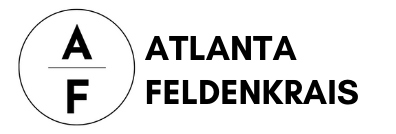“Man is not only a machine but a machine which works very much below the standard it would be capable of maintaining if it were working properly.”
P.D. Ouspensky
In order to understand something, we have always compared it to ourselves.
For example, when the computer was invented, it was most easily understood as a mechanical brain. The comparison made what computers do more relatable and easier to grasp.
This works in both directions. For instance, we often assign human emotions and motives to our pets. We even believe that God created us in his image. (Or was it that we created Gods who look like us?)
In the 19th and 20th centuries, if someone compared you to a machine, it meant you were reactive or lacking free-will (which was only available to human beings and not even animals).
Being told you were “mechanical” meant you lacked flair, imagination or creativity.
As technology progressed, the balance began to shift. Towards the end of the 20th century, the machines were winning. We have all heard of Artificial Intelligence (AI) which has surpassed human ability in many mental processes.
While AI has only recently started competing with humans in the mental arena, machines of all kinds have been trouncing us in physical tasks for decades.
Cars move much faster than us. Giant bulldozers can literally move mountains and airplanes can fly. The list is endless.
So much so, that if you were compared to a machine today, you may end up considering it a compliment. One that highlights your ability to perform (mechanically) difficult tasks efficiently, reliably and without taking a break. Or complaining about the pay.
On the other hand, being human these days is often equated with weakness, inconsistency and emotional frailty.
So, at this pivotal point in human history, should one aspire to be like a machine? Or is there something special in humans which cannot be copied by a machine?
I will be the first one to admit I do not have definitive answers to these questions.
But in the rest of the article, I would like to highlight some of the advantages of being human. And offer some words of caution against treating ourselves like machines and what we lose out on as a result.
To begin with the obvious:
A machine cannot heal or repair itself
Within seconds of an injury, your body’s defense systems are already in action, working to contain and repair the damage.
I could reasonably argue that the body’s own immune system is the most powerful medicine. Given the right conditions and some rest, your body can repair tissue damage, repel attacks by germs and come back even stronger than before.
This ability is the first casualty of the “machine” mindset. Machines don’t need sleep, nor do they need rest. As a result, we have the desire to always be “on.”
A corollary to this attitude is the desire to be “fixed” when one is not performing to one’s satisfaction. For example, if we have back pain while sitting at the desk or lifting weights, we look for the quickest way to fix it so we can get back to what we were doing.
We often omit rest and recuperation, the conditions required for the body to heal itself. Getting back to “work” becomes our top priority, whether it means taking pain medication or even getting surgery done.
This desire to be ‘fixed’ or ‘repaired’ is what I see most often in my practice. People would do better by looking to “improve.”
Machines deteriorate with use, humans improve.
Machines are made up of parts as are humans. Parts wear out. However, it is a lot easier to replace a machine’s parts. On the other hand, our “parts” are constantly being repaired and upgraded from the inside.
For example, the lining and the lubricating fluid in the synovial joints is continuously replaced as we move. Our bones and muscles become stronger by lifting weights. Our body gets better with use!
A caveat here on how we use our body. To quote from Dr. Feldenkrais from “Body and Mature Behavior”:
“When a screw has to be driven, it is of little importance whether the screwdriver is used skillfully or not; it might even be driven with a knife.
Rare and essentially non-repetitive actions can be carried out in this fashion. If one, or only a few screws are to be put in, the knife may not suffer too much. And the screws might be reasonably well driven in.
In habitual and constantly recurring action, it is essential to preserve the tool. In the living organism, the tool must improve by use, otherwise perfect action is possible only for a short time. If a knife is used for screwing a large number of screws, it becomes useless as a knife and as a screwdriver. ”
Most people act as if their parts can be changed as they would be in a machine. They seldom try to learn how to use themselves well, especially in activities they will repeat continuously over their lifetime. As a result, their parts wear out quicker than they need to.
The discovery of the “caloric” or energy content of food confused the issue even more. This reductionism of food to its equivalent in fuel terms has done us a big disservice. In some ways, we are now consuming “fuel” rather than eating “food”. Not surprisingly, some of the processed food being sold now is not even food!
This deterioration is certainly not a given. If you learn to use yourself intelligently, in a way that continuously improves how you move, it is possible to keep getting better! In the minimum, it significantly reduces the damage to your body.
Humans are intelligent, machines not so much.
Machines are beginning to learn with the help of complex algorithms. However, their abilities are largely in the virtual domain and quite limited in the physical world.
Russian neuroscientist Nikolai Bernstein, whom we met in Chapter 11, made a strong case for the richness of human movement over that of machines. He believed that for even the most complex machines, each moving part of the machine has only one degree of freedom.
The phrase “degrees of freedom” refers to the range of possible movements available to the moving object. A single degree of freedom only allows for movement back and forth, along a single set path. Like the movement of a piston in an engine.
Adding just one more degree of freedom leads to a giant leap in complexity. If you take a pen and draw on a piece of paper, the tip of the pen has just two degrees of freedom. Yet, it can trace an infinite number of shapes without breaking contact with the paper.
While a machine as a whole may be able to achieve varied and complex movements, each part of the machine moves only along the same, precisely defined path. Therefore, each part has only one degree of freedom and however complex machines may appear at first glance, they possess the simplest form of mobility.
On the other hand, many human body parts have several degrees of freedom. The human body as a whole, with over 200 joints and 600 muscles, has many times the degrees of freedom available to any machine ever built.
The comparison is not even close.
Let me illustrate by using an example: Each of your hands and wrists alone have 20 degrees of freedom between them!
There are so many degrees of freedom in the human body that many of them are redundant. For instance, you can move your fingertip over a keyboard by bending either your finger or your wrist. Or both.
You could also type with your fingertip by bending your elbow or your shoulder while preventing your wrist from moving. Or you could use a combination of all these joints.
In fact, during any movement, your brain has so many options that it is constantly deciding as to which joints to move and which ones to restrict. It simply has too many choices!
This freedom combined with the intelligence of your nervous system allows your hands to play the piano or tie your shoelaces. Or to effortlessly conform to the shape of any object you need to grasp, lift or manipulate. No machine can replicate this level of flexibility in usage.
When we learn a new skill or an unfamiliar movement, we begin by reducing the degrees of freedom. We do this by preventing some joints from moving. The resulting movement may seem stiff or restricted, but it is easier to control as we learn.
As we become more skillful, we allow more joints to be unlocked and participate. This leads to a more fluid, graceful movement involving more of our whole body.
As you can see from the above, different parts of the body move and interact with each other in very complex ways.
Machines do not have the degrees of freedom nor the intelligence of the human brain. Nor can they make their movements more efficient or learn new movements over time.
We cannot treat our body in the same mechanistic way as we would a machine. For example, while working with a knee injury we cannot just consider the mechanical damage on the knee itself without considering its connection with the rest of the body (hips, ankles, feet & spine). Nor can we ignore the choices available (or not available) to the nervous system for organizing the movement of the knee.
A mechanistic treatment focused on the knee itself will simply not bring satisfactory improvement. A more nuanced approach is required. One that takes our human design and intelligence into consideration.
In order to see our intelligence in action, I invite you to view this short YouTube Video about a young woman born with no arms as she washes and dries her hair, does the dishes and even changes her baby’s diapers. It will challenge you to think about what is possible when we stretch our innate capability to learn.
https://www.youtube.com/watch?v=aSaHW0tu48Y
Humans need other humans.
While it is quite obvious it needs to be said: We are social creatures. We cannot exist alone. Each one of us is born into a family, a culture and a language.
We learn from others. We need other nervous systems around us in order to regulate our own.
Dr. Feldenkrais described Functional Integration as “one nervous system dancing with another.”
I have always found that thought quite poetic.
Thank you for joining me. In the next article we will look at “What is good movement.”





2 Comments
Leave your reply.